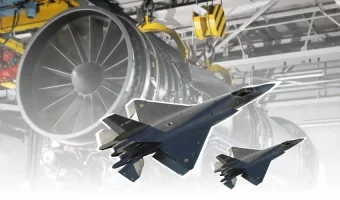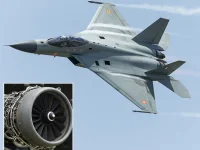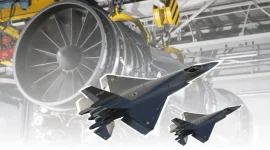- Views: 4K
- Replies: 23
In a significant declaration for India's indigenous defence capabilities, the Gas Turbine Research Establishment (GTRE) has confirmed it possesses the complete technical knowledge to develop and produce a fifth-generation fighter jet engine.
However, with no immediate demand from the Indian Air Force (IAF), the agency is directing its resources towards a more advanced, collaborative project to create a sixth-generation engine for the upcoming Advanced Medium Combat Aircraft (AMCA).
An official from the Bengaluru-based GTRE, a key laboratory of the Defence Research and Development Organisation (DRDO), stated that the expertise gained over decades, particularly from the Kaveri engine project, has provided a solid foundation.
The Kaveri program, though it did not culminate in an engine for India's Tejas fighter, proved to be an invaluable technology demonstrator, maturing the country's capabilities in material science, thermodynamic modelling, and complex turbine design.
"We are in a position to develop a full-fledged fifth-generation fighter jet engine entirely in the country," a senior GTRE official announced.
He projected that if a demand were placed, a fully operational engine could be delivered within a decade, thanks to mastery over critical technologies like single-crystal turbine blades and advanced cooling systems, which are essential for the high performance and durability required by modern combat aircraft.
Despite this readiness, there is currently no formal requirement from the IAF for a new fifth-generation engine.
The nation's current and near-future fighter fleet, including the Tejas Mk1A and the upcoming Tejas Mk2, will be powered by American engines—the GE F404 and the more powerful GE F414, respectively.
Also, a deal with US-based GE Aerospace for the domestic production of F414 engines with significant technology transfer is in its final stages.
Consequently, GTRE has strategically pivoted towards the future, focusing on co-developing a sixth-generation engine for the AMCA program. This next-generation stealth fighter, expected to enter production in the early 2030s, requires a cutting-edge propulsion system.
This joint development will be pursued with an international partner, with France's Safran and the UK's Rolls-Royce being the primary contenders. The goal is to create a scalable and powerful engine to support the AMCA throughout its operational life.
The international collaboration is expected to provide India with access to niche and futuristic technologies critical for air combat superiority.
These include adaptive cycle engines, which can dynamically alter their bypass ratios for optimal fuel efficiency during cruise and high thrust during combat, as well as enhanced stealth characteristics to reduce infrared signatures.
This partnership model is aimed at leapfrogging a generation of technology and positioning the Indian defence sector at the forefront of aerospace innovation.
While the immediate focus has shifted, the proven capability to produce a fifth-generation engine provides India with crucial strategic autonomy.
This ensures that the nation can reduce its dependence on foreign imports for military hardware and has the option to revive the indigenous engine program if future geopolitical or strategic needs dictate a change in course.
This underlying strength bolsters India's long-term security and self-reliance in the critical field of defence technology.



